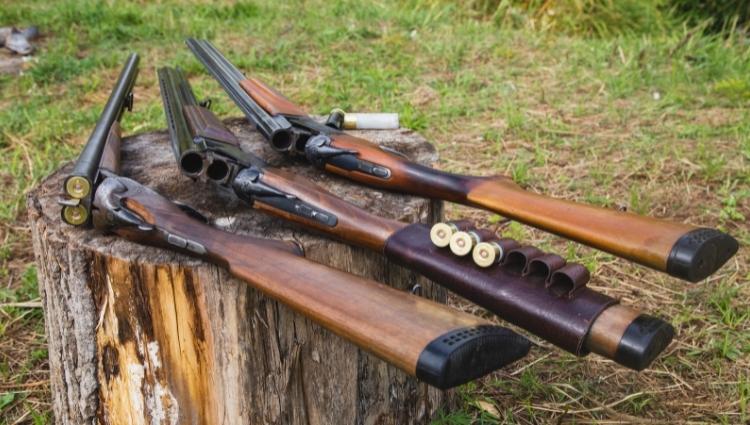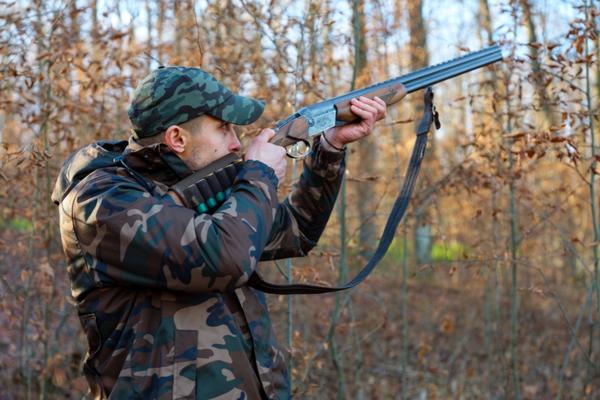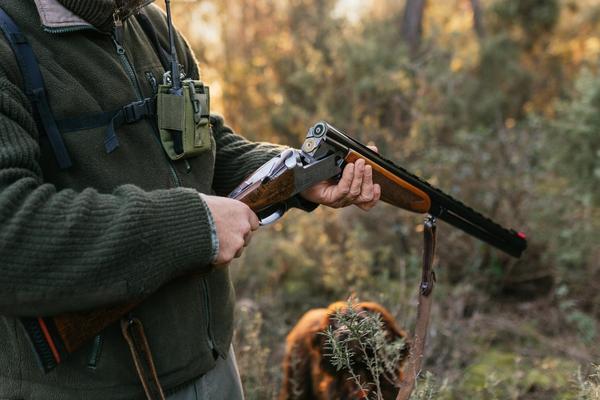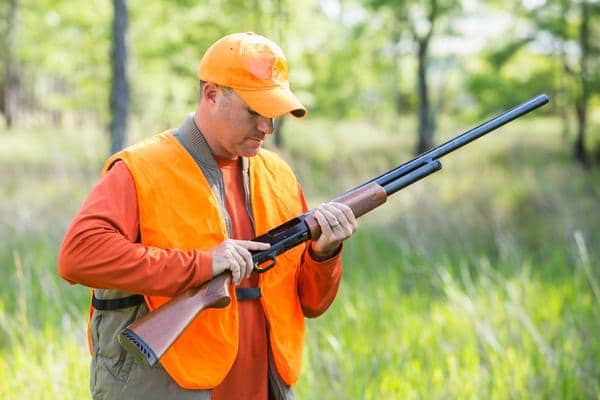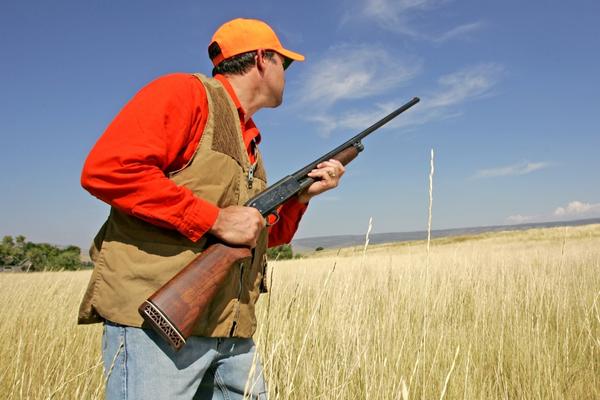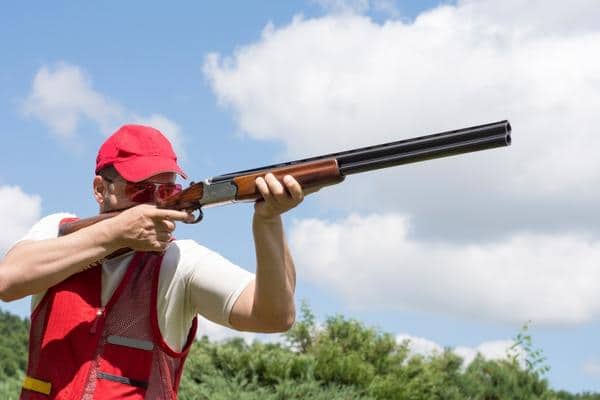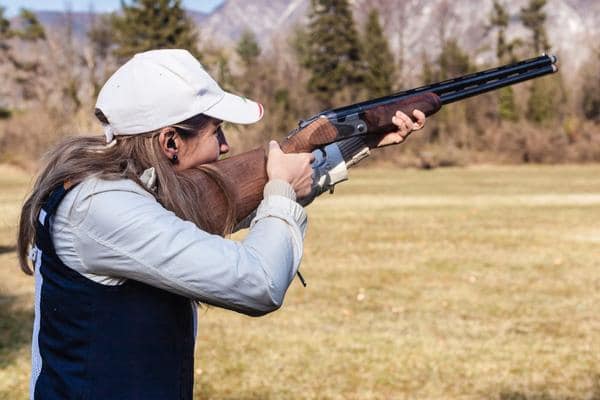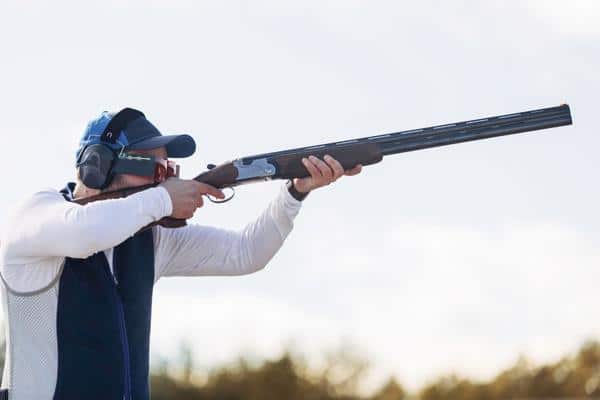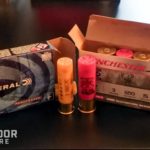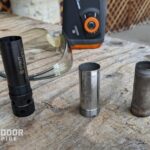Getting into shotgunning seems like it should be easy. All you need is a 12-gauge shotgun and you can do everything, right?
Then you get to the sporting goods store and there are just so many different shotguns on the shelves.
And, if it’s anything like my hometown’s gun shop, there’s a section just for fancy-looking shotguns with a price tag of $2,000 or more!
What is the difference between a field and a sporting shotgun like a Winchester SXP and a Benelli 828?
And do these differences always matter?
Generally, a sporting shotgun is longer and heavier than a field shotgun. This is because hunting shotguns have to strike a balance between performance and weight since you must carry them while hiking in the wilderness.
What is a Hunting Shotgun?
A hunting shotgun is also called a field shotgun or a game shotgun.
As you can tell from the name, the purpose of these shotguns is to go with you into the field (or onto the water), so you can deliver a cloud of lead (or non-toxic shot) to the game animal you’re hunting.
Modern shotguns are descended from the historic firearm known as a fowling piece. They were smooth-bore muskets intended for bird hunting.
Recreational sports involving shotguns developed later, so one could say that hunting guns were the original shotguns.
There are many different types of hunting shotguns, but they all have the same design elements in common. Some performance is sacrificed to make them easier to carry in the field.
Anybody who has hiked for long distances knows that every ounce of extra weight compounds upon itself. If you spend a long time carrying a gun, you want it to be as light as possible.
So, you’ll often see polymer stocks on field guns. These are extra light. Simple wood stocks are common as well.
But one of the most effective ways to minimize weight is to remove metal. This means shortening the barrel, and that’s where most of the performance sacrifice comes into play.
Now, a shotgun doesn’t suffer from velocity loss due to barrel length nearly as much as a rifle. The problem comes when you swing onto your target.
A shorter barrel has less momentum than a longer barrel. This can result in a snappier swing, hurting your follow-through.
Shortening the barrel also reduces the distance between the shotgun’s front bead and your eyes. Like rifles and iron sights, a longer sight line minimizes sighting errors.
A hunting shotgun typically has a barrel length of either 26″ or 28″.
This is long enough to help you swing on target while cutting some precious ounces off the weight you need to carry with you as you wade to the duck hunting stand.
Something you won’t see on most field guns is a lot of decoration. That’s because nature isn’t gentle and no matter how much you baby your gun, it’ll eventually get scratched or dinged up.
Also, hunting shotguns are often made of a high-enough quality but aren’t designed to handle hundreds of thousands of shots. Hunting isn’t a high-volume activity so manufacturers don’t have to put every expense into their gun’s reliability.
I’m not calling the average hunting shotgun unreliable, mind you. Read down to the sporting shotgun section to see what I consider a high volume of fire!
So, field guns are often inexpensive compared to sporting shotguns due to the lack of decoration and less-exacting manufacturing standards.
What Are the Types of Hunting Shotguns?
Hunting shotguns are typically categorized by their action type.
Break Action
A classic design, break-action shotguns have a lever by the receiver. Push it, and the barrel drops, giving you access to the chambers.
These shotguns are reliable and have a compact layout for a given barrel length.
Single barrel, over/under, and side by side shotguns can be found in the field. Of these, the over/under style is the most common for two main reasons: Ammo capacity and shot convergence.
Double-barreled shotguns let you carry two rounds ready at once, which is excellent since birds rarely travel solo.
As for shot convergence, whenever you have two gun bores, you can never get them perfectly parallel with each other. If you stick a laser in each barrel, you’ll find that the dots will converge or diverge from each other as you change distances.
Side-by-side shotguns have horizontal convergence. This means you’ll have to compensate left or right for each one.
For over/under, though, the convergence is vertical. This means you can pattern your shotgun at several ranges to see how the barrels perform in reference to each other.
Use this to determine one barrel as the close-range barrel and the other as the long-range barrel, helping you to be accurate at all ranges!
You’ll typically want the tighter choke on the long-range barrel, by the way.
Pump Action
The most common hunting shotgun today is the pump action.
An internal bolt is attached to the handguard by one or two action bars. You pump the fore-end and the bolt moves too, ejecting the previous shell and loading the next one from the tube magazine.
Pump shotguns are cheap, reliable, and can hold the maximum number of shells allowed by law. Federally, this is 3 rounds when hunting waterfowl. Some states enforce this limit for upland bird hunting, too.
Pump shotguns are a bit longer than over/under shotguns but make up for this in weight by not having a second barrel.
Semi-Automatic
Semi-automatic shotguns use gas or inertia to operate the internal mechanism that moves the bolt and chambers to the next shell.
For a long time, semi-auto shotguns had a reputation for being unreliable.
Manufacturers have solved this problem for the most part. Remember that cheap semi-autos still tend to have reliability problems, though.
Externally they tend to resemble pump shotguns, though the fore-end rarely moves. Some semi-auto shotguns can be operated as pump shotguns, though!
The shotgun I’ve hunted with the most is a Franchi 48 AL, a recoil-operated semi-auto shotgun.
What is a Sporting Shotgun?
As I mentioned before, sporting shotguns were developed later than hunting shotguns.
People realized they could “hunt” competitively by releasing captive birds at a known distance.
This was expensive because you needed to capture or raise the birds, feed and house them, then have servants release them on command.
Shotgun sports became available to the masses after the introduction of clay pigeons, which are discs that curve through the air when launched by hand or a device. This cut a lot of costs from sport-shooting.
As shotgunning as a sport evolved, so too did the shotguns used. Nowadays the average sporting shotgun is a different beast than a hunting shotgun.
Functionally they’re the same. They still have a barrel or two, a bead, and ignite the shotshell when you actuate the trigger.
However, sporting guns have their priorities on performance and longevity.
Longevity is a bit different from reliability. You see, sport shotguns are not meant to handle dirt and mud. Instead, they’re meant to be shot a hundred times each visit to the club.
Every week. For decades.
A sporting shotgun that lasts only 10,000 rounds is a failure. Good ones can handle 100,000 shells or more before they require major maintenance.
The cost of the gun itself, no matter how high, becomes minimal when averaged out over this high volume of fire.
However, this type of longevity requires a high level of care during manufacturing, which drives the cost of sporting guns up.
Some shotgun sportsmen believe that no shotgun under $2,000 can handle the long-term stresses of clay shooting.
I can’t entirely agree with this because not everyone can get out to the range every week.
However, I will still caution people looking for a sporting shotgun to budget higher than they would for a hunting shotgun.
Because sporting shotguns are more expensive, more people treat them like high-value artifacts. So, you’ll often see nicer wood and engravings on a sporter gun.
Now, as for their performance…
You’ll rarely have to carry a sporting shotgun for more than a few hundred feet. So, they can be as long and heavy as they need to be.
Clay shotguns are typically 28″, 30″ or 32″. Certain trap shotguns can be 34″ long!
The longer length provides a better swing, helping you hit every clay you pull on.
Also, sporting shotguns sometimes have weights added to the buttstock or even the handguard. These weights help to absorb recoil. They can also adjust the gun’s balance for improved mounting.
Sporting guns are often modified to fit each user perfectly so you have the edge when competing.
There are guides on doing these modifications at home, but you can also seek out the services of a professional. This can be worth it.
Clay shotguns also typically have a rib that helps with your eye-to-bead alignment to help improve your consistency.
What Are the Types of Sporting Shotguns?
The main clay shooting disciplines are trap, skeet, sporting clays, and five stands.
The most common gun you’ll see is a break-action shotgun, generally an over/under.
While you can use the same shotgun for all of them, dedicated competitors will use specialized shotguns with slightly different shooting characteristics for each discipline.
Sporting Shotguns
While “sporting shotgun” can apply to all clay shotguns, it’s also a term used by some people to refer to a shotgun intended for shooting sports without being specialized in a certain sport.
To meet this definition, a sporting shotgun is well-balanced. It also shoots to the point of aim.
This seems like an odd thing to say, but we’ll get into why it’s important in just a little bit.
Skeet Shotguns
Shotguns specialized for skeet shooting will have a barrel-heavy center of balance.
Skeet shooting involves two birds flying at the same time. There’s rarely a large vertical gap between them.
The heavier barrel helps follow through as you point at and break both clays.
Some skeet shooters prefer a slightly shorter barrel length when skeet shooting, down to 26″.
Skeet shotguns also shoot to the point of aim.
Trap Shotguns
Trap shooting involves a single bird, launched at a semi-random angle away from you, always traveling up before they fall back down.
Because you want to catch the bird before it gets too far away from you, you shoot it on the rise.
Many trap shooters find they can get an edge here by using a shotgun set up to hit a bit above the point of aim. Especially if you don’t want to cover your view of the rising clay with your barrel.
Trap shotgun barrels have also trended longer than other disciplines, which is why you’ll sometimes see trap shotguns with a barrel 34″ long.
Some trap over/under shotguns even forgo the upper barrel entirely and replace it with an extra-tall rib.
Hunting vs. Sporting Shotgun Direct Comparison
Now that we know all we want to about field and sporting shotguns, let’s compare them head to head so you can easily see their strengths and weaknesses.
I’ll also include tactical shotguns, often used for self-defense. They’re more similar to hunting guns than sporting guns but aren’t exactly the same.
| Category | Tactical | Field | Sporting |
| Price | Inexpensive | Inexpensive | Expensive |
| Weight | Medium | Light | Heavy |
| Barrel Length | Short | Medium | Long |
| Field Reliability | Good | Great | Middling |
| Longevity | Good | Good | Excellent |
| Capacity | High | Medium | Low |
Are Hunting and Sport Shotguns Interchangeable?
As you can see, hunting and sporting shotguns are not the same.
However, if you want to, you can use them the same way.
An oft-repeated piece of advice is for new shotgunners to take their new tactical or hunting shotgun to the gun club so they can get in some high-quality shooting practice.
Generally, the more specialized your shotgun, the worse it will perform when acting outside its specialty. This should be obvious but it’s worth stating.
And, remember, hunting shotguns are actually rather generalist guns because they’re designed to strike a balance between performance and comfort in the field.
Fortunately, many models of shotguns are designed so you can remove one barrel and install another.
Do you have an 18″ tactical shotgun? You may be able to find a 28″ field barrel for it!
While many high-end over/unders have this capacity, so do some inexpensive shotguns.
The Stevens 320, for example, is available as a combo with both a 28″ barrel and an 18.5″ barrel.
Even budget shotgunners can cover hunting and sport shooting with the same shotgun.
Conclusion
In the end, a sporting shotgun is a specialized type of hunting shotgun, historically speaking.
I’ve seen a Remington 870 shooting trap at the same time as a Browning Citori. It wasn’t the gun that won that shoot-off. It was the shooter.
Ultimately, you’ll perform better with a gun you’re comfortable with than with a gun that costs more but doesn’t feel right in your hands.
If you doubt the type of shotgun you want, start with a field shotgun. They are perfectly capable when hunting or sport shooting. You can always save up for a high-end sporting gun later.
FAQs
Can you hunt with a sporting shotgun?
Yes, you can hunt with a sporting shotgun. However, sporting shotguns often have expensive finishes that can be damaged by rough handling in a field. They can also be quite heavy.
Can one shotgun be used for duck hunting, upland hunting, trap, skeet, and sporting clays?
A single shotgun can be used for all types of hunting and all types of shotgun sport shooting. I’d recommend a 28″ over/under or pump shotgun for this purpose or a shotgun with interchangeable barrels.

